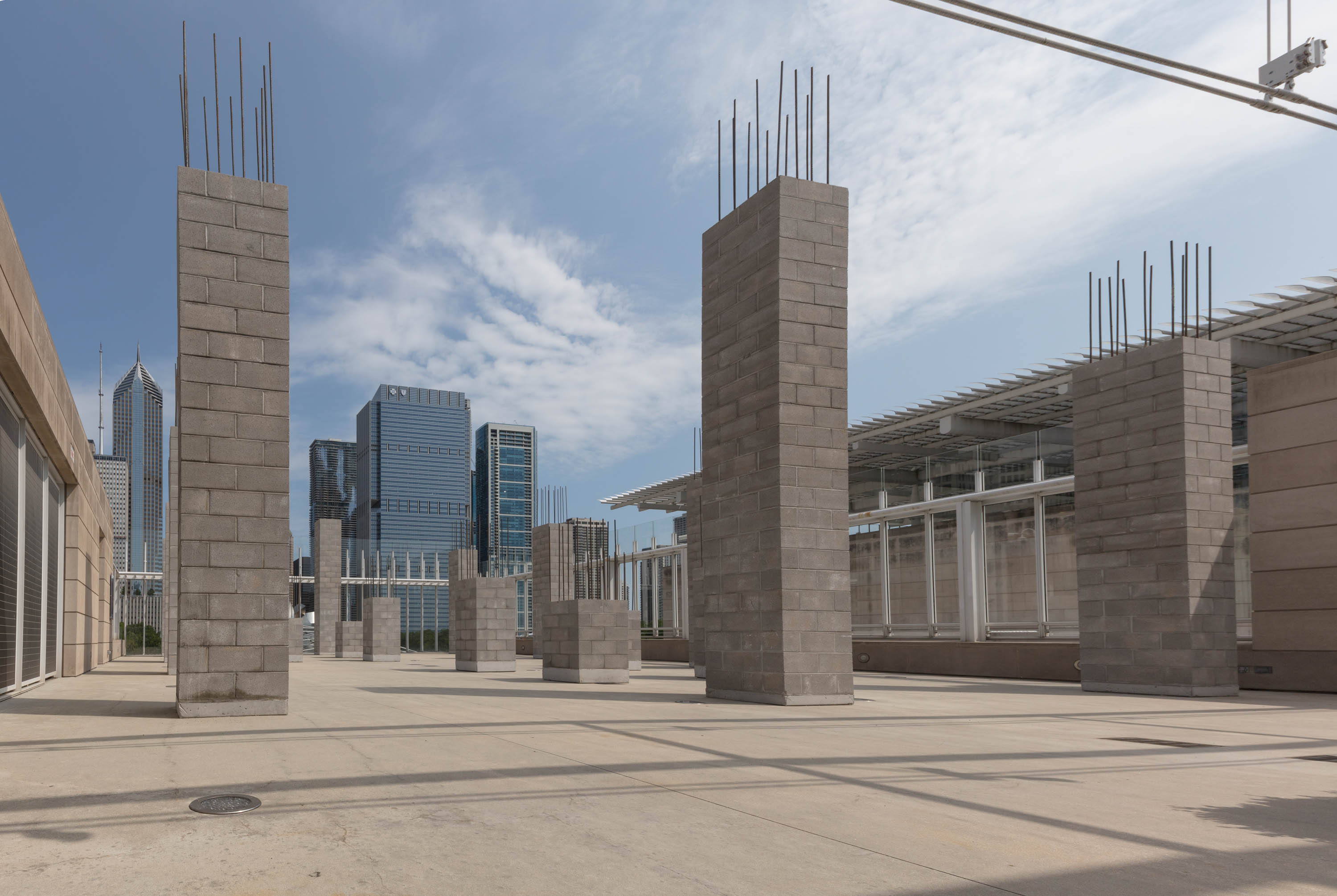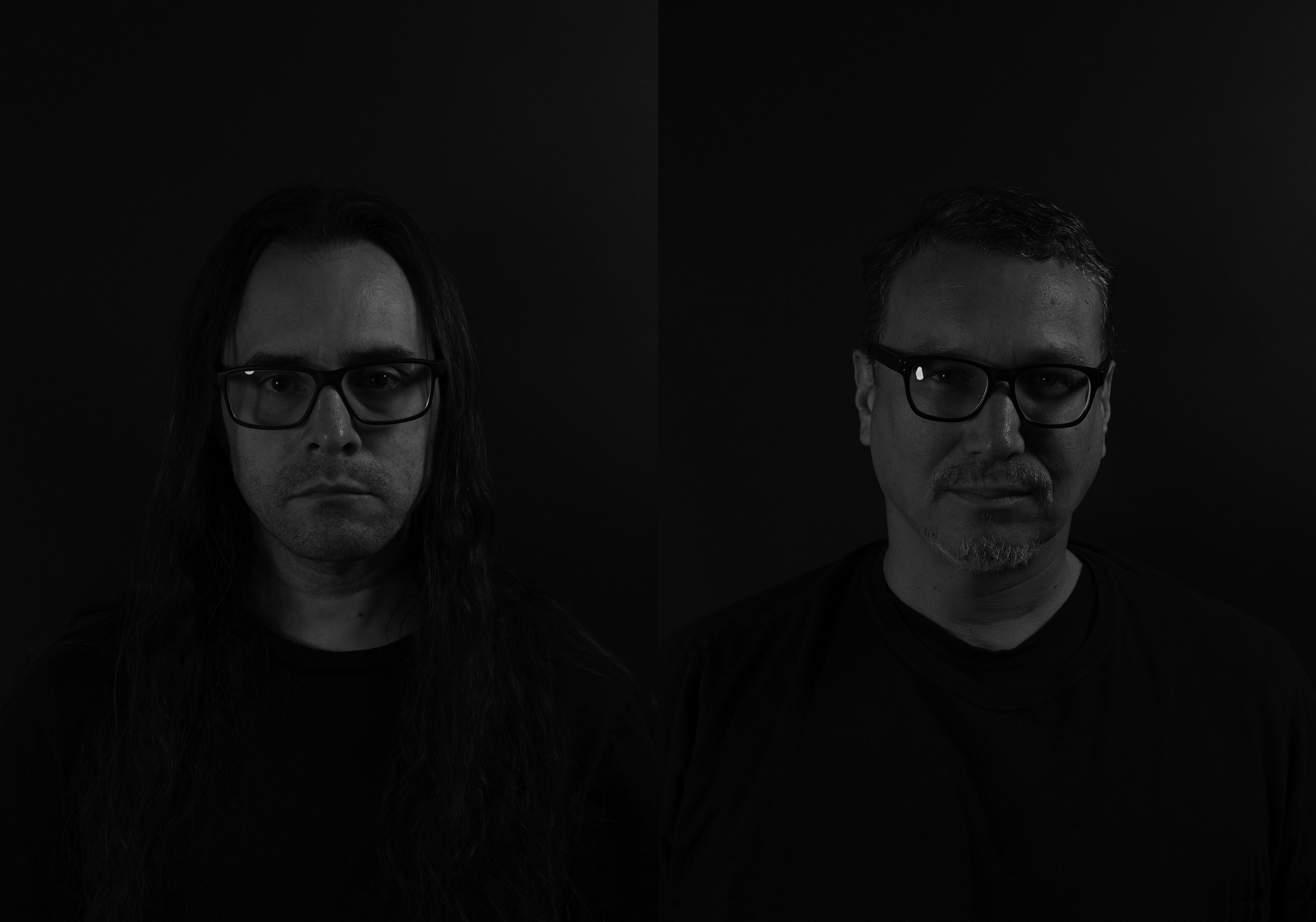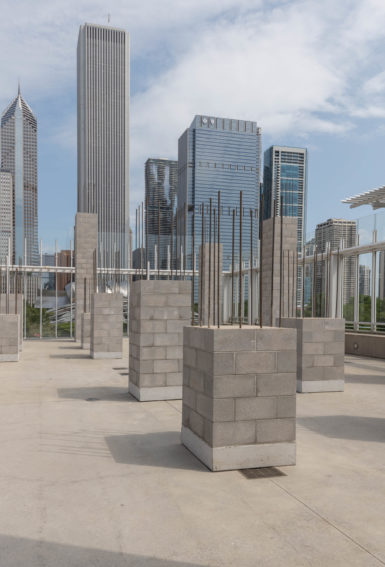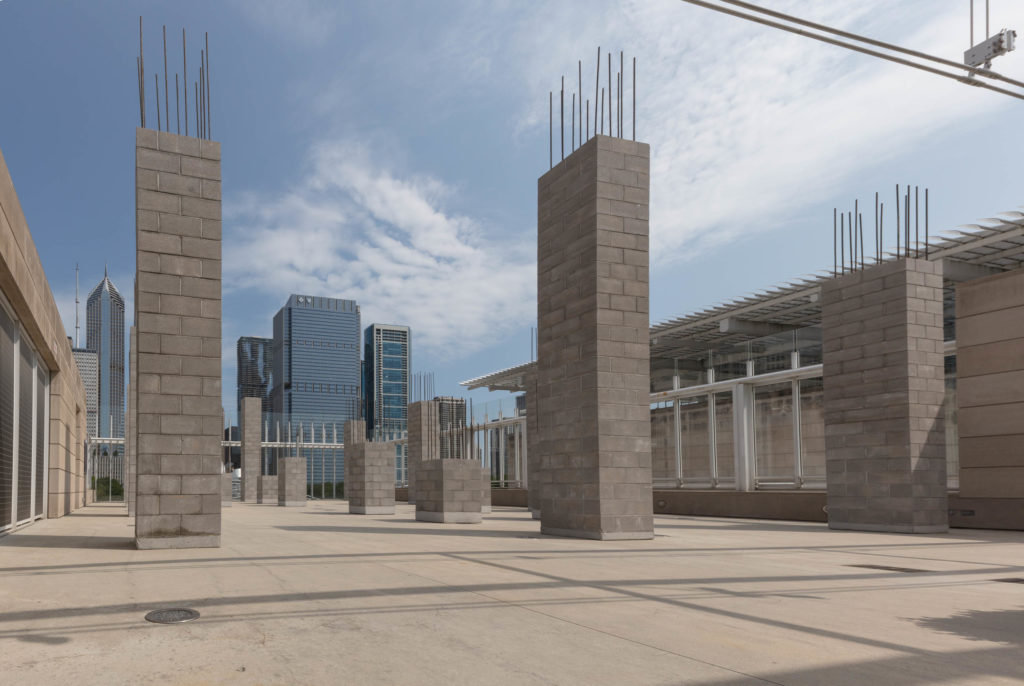[ad_1]

Installation view of “Postcommodity: With Each Incentive” at the Art Institute of Chicago.
ART INSTITUTE OF CHICAGO
Late last month, Postcommodity, an artist duo based in the American Southwest, gathered on the terrace of the Art Institute of Chicago to raise a toast. The group’s two artists—Cristóbal Martínez (mestizo) and Kade L. Twist (Cherokee)—had just completed the installation of their latest work, a new commission for the museum. Just over a dozen imposing concrete columns of differing heights stood at scattered intervals around them, each one adorned with upright prongs of steel rebar. Joining artists Martínez and Twist that day were workers from the construction firm Bulley & Andrews who had recently hauled the installation’s components to the third-floor outdoor space.
When we met on the sun-drenched terrace that day in July, Martínez said that finishing the install was “a very ceremonious, celebratory moment. We brought beer for the crew, and the company’s president christened [the work] with a bottle of Champagne. We always try to make sure that this is about building relationships, even if they are for a small moment of time.”
The resulting installation, on view through April, is titled With Each Incentive, and it’s a call to create space for and support people whose human rights are increasingly being denied—specifically refugees entering the United States from Central and South America, many of whom are of Indigenous descent. While many of Postcommodity’s best-known works have examined the borderlands between the U.S. and Mexico—from their border-crossing installation Repellent Fence to Coyotaje, a sculptural critique of Border Patrol decoys—With Each Incentive considers the impacts of the migrant crisis within the nation.

Postcommodity: Cristóbal Martínez and Kade L. Twist.
COURTESY THE ARTIST AND BOCKLEY GALLERY
Chicago, which originally belonged to Potawatomi people, is just one of many cities that has received thousands of refugees in recent years. To Postcommodity, this influx makes it important for their communities to have self-determination and be able to govern themselves, whether through community organizations, radical art forms, or other means. “We need to acknowledge this migration in real time and start preparing for that transformation. Rather than fight it, embrace it,” Twist said. “There’s a lot to learn from how Black people were treated and disregarded through most of [the Great] Migration. There’s a desperate need to humanize.”
With Each Incentive, which was curated by Lekha Hileman Waitoller, the museum’s exhibition manager for contemporary art, uses architectural iconography as a metaphor for cultural expansion. Each column in the installation references a common sight in Latin America. Rebar typically serves as a foundation for a building’s expansion; in Mexico, the steel poles extend skyward from roofs, giving houses an unfinished appearance, and signify that there is more to come—that some greater future awaits. Locals call these raw reinforcements castillo—a term that Twist and Martinínez learned from workers on the piece’s construction crew, many of whom hail from Latin America. “It’s aspirational,” Twist said. “For growth, for maintaining the cultural practice of multigenerational family living. So we’re thinking about the castillo as a vessel that contains culture and ideas.”
“It’s sacred, like a totem,” added Martínez. “It’s Indigenous knowledge, a sacred architectural gesture.”

Installation view of “Postcommodity: With Each Incentive” at the Art Institute of Chicago.
ART INSTITUTE OF CHICAGO
Together, the columns on the Art Institute’s terrace form a mini metropolis beneath the city’s hallowed skyscrapers. Their differing heights, shooting as high as 16 feet into the air, suggest a place in flux. Positioned on the terrace, which offers a sweeping view of Millennium Park and its glassy environs, With Each Incentive functions as an Indigenous lens through which you can view the expanding area.
The work’s setting, atop the museum’s modern wing, a steel and glass building designed by Renzo Piano, is important to the artists’ thinking, as well. The castillos disrupt the building’s neat lines when seen from afar, as the rebar sticks out like spikes intended to ward off birds. “We’re hacking that formalism,” Twist said, referring to Piano’s designs and adding that the piece subverts the “obsessions with the Judeo-Christian, Western, scientific worldview and with architecture as this symbol of power, prestige, and ownership.” Questioning such thinking feels especially apt in a city hailed as the birthplace of the skyscraper. And given Chicago’s rapidly changing skyline (over 40 high-rises are currently under construction), it is evermore urgent to ask what new foundations are being formed to serve migrant communities.
The terrace is a highly visible spot, and a restaurant opens onto the exhibition space, meaning that the work may play host to some unexpected events in the coming months. When Postcommodity and I were talking, brunch at that boîte was in full swing, and two diners wandered over to the terrace to pose for a photo against the skyline. One rested her purse and a glass on a low castillo—that is, until Waitoller, the show’s curator, notified her that her makeshift pedestal was, in fact, an installation. Twist shrugged it off: “That’s part of public art, I suppose—forgetting that it’s art.”
Martínez said he was “starting to get goosebumps” seeing the installation operate as a living space. “We tried to create a sort of Indigenous ceremonial grounds,” he said. “With the height and size, we wanted to create a strongly immersive environment where you can embody the spirit of all our ideas. This is a sacred space.”
[ad_2]
Source link

